Home>Furniture & Design>Bathroom Accessories>What To Put In A College First Aid Kit


Bathroom Accessories
What To Put In A College First Aid Kit
Modified: August 16, 2024
Ensure your college first aid kit is stocked with essential bathroom accessories for any unexpected emergencies. Be prepared for any situation with our comprehensive guide.
(Many of the links in this article redirect to a specific reviewed product. Your purchase of these products through affiliate links helps to generate commission for Storables.com, at no extra cost. Learn more)
Bandages and Adhesive Dressings
Bandages and adhesive dressings are essential components of a college first aid kit, serving as the first line of defense against minor cuts, scrapes, and wounds. These items are crucial for promoting proper wound healing and preventing infections, making them indispensable for any student's health and well-being.
Variety of Sizes and Shapes: When assembling a college first aid kit, it's important to include an assortment of bandages and adhesive dressings in various sizes and shapes. This ensures that you are prepared to address different types of wounds, from small paper cuts to larger abrasions. Additionally, having different sizes available allows for a more tailored and effective approach to wound care.
Adhesive Bandages: Adhesive bandages, commonly known as "band-aids," are a staple in any first aid kit. These versatile items are designed to cover and protect minor wounds, helping to keep them clean and free from exposure to dirt and bacteria. They also provide a barrier against friction and irritation, promoting faster healing and reducing the risk of complications.
Gauze Pads and Roll: In addition to adhesive bandages, including sterile gauze pads and a roll of gauze in the first aid kit is crucial for managing larger wounds or applying pressure to control bleeding. Gauze pads are highly absorbent and can be used in conjunction with medical tape to secure them in place, providing a more comprehensive approach to wound care.
Advanced Dressings: For more serious injuries, such as deep cuts or burns, advanced adhesive dressings with specialized features, such as non-stick surfaces or hydrocolloid technology, can be beneficial. These dressings provide optimal protection and create an ideal environment for healing, making them valuable additions to a well-equipped first aid kit.
By ensuring that the college first aid kit contains a variety of bandages and adhesive dressings, students can be prepared to address a wide range of minor injuries effectively. These supplies not only promote proper wound care but also offer peace of mind, knowing that essential first aid resources are readily available whenever they are needed.
Key Takeaways:
- Be prepared for minor injuries at college by including bandages, antiseptic wipes, and pain relievers in your first aid kit. These essentials promote proper wound care and provide relief from discomfort.
- Keep your college first aid kit stocked with cold packs, hand sanitizer, and emergency contact information. These items help manage injuries, maintain hygiene, and ensure swift access to help when needed.
Read more: What To Put In A First Aid Kit For A Car
Antiseptic Wipes and Alcohol Pads
Antiseptic wipes and alcohol pads are indispensable components of a college first aid kit, playing a crucial role in preventing infections and promoting proper wound care. These sterile, disposable items are designed to disinfect the skin and surrounding areas, making them essential for cleaning minor cuts, scrapes, and wounds.
Antiseptic Wipes: These pre-moistened wipes are saturated with antiseptic solutions, such as benzalkonium chloride or povidone-iodine, which are effective in killing bacteria and reducing the risk of infection. Antiseptic wipes are gentle on the skin and provide a convenient and hygienic way to cleanse minor wounds before applying dressings or bandages. Their individually sealed packaging ensures that each wipe remains sterile until it is ready to be used, making them ideal for inclusion in a first aid kit.
Alcohol Pads: Alcohol pads, also known as alcohol swabs, contain isopropyl alcohol and are specifically designed to disinfect the skin before injections, blood draws, or minor surgical procedures. These pads are highly effective in killing bacteria and germs on the skin's surface, making them essential for maintaining proper hygiene when treating minor injuries. Their small, individually wrapped packaging makes them convenient for on-the-go use and ensures that each pad remains sterile until it is needed.
When assembling a college first aid kit, it is essential to include a sufficient quantity of antiseptic wipes and alcohol pads to accommodate multiple uses. These items not only help prevent infections but also promote a clean and hygienic approach to wound care, which is crucial for supporting the body's natural healing process.
By including antiseptic wipes and alcohol pads in the first aid kit, students can confidently address minor injuries knowing that they have access to the necessary supplies for proper wound cleansing and disinfection. These items provide a sense of preparedness and empower students to take proactive measures in maintaining their health and well-being while pursuing their academic endeavors.
Gauze Pads and Medical Tape
Gauze pads and medical tape are fundamental components of a college first aid kit, serving as versatile and essential supplies for managing a wide range of injuries and wounds. These items play a pivotal role in providing effective wound care, promoting proper healing, and ensuring that injuries are appropriately protected and secured.
High Absorbency and Versatility: Gauze pads are designed to be highly absorbent, making them ideal for controlling bleeding and managing wounds that require a sterile covering. Their ability to absorb fluids helps to keep the wound clean and dry, creating an optimal environment for healing. Additionally, gauze pads are versatile and can be easily cut to fit the size and shape of the wound, allowing for customized and effective coverage.
Sterile and Non-Adherent: It is crucial to include sterile gauze pads in a first aid kit to minimize the risk of introducing contaminants to the wound. Sterile gauze pads are individually packaged to maintain their cleanliness and integrity, ensuring that they are safe for use on injuries. Furthermore, non-adherent gauze pads are designed to prevent sticking to the wound, minimizing discomfort and trauma during dressing changes.
Secure Wound Dressing: Medical tape is an essential companion to gauze pads, as it provides a secure and reliable method for holding the dressing in place. When selecting medical tape for a first aid kit, it is important to choose a hypoallergenic and breathable option to minimize the risk of skin irritation. The tape should adhere firmly to the skin and gauze without causing undue discomfort, allowing for the effective immobilization of the dressing.
Support for Joint Injuries: In addition to wound care, medical tape can be utilized to provide support and stability for joint injuries, such as sprains or strains. By applying the tape in a specific pattern, it is possible to create a supportive wrap that helps reduce swelling and provides compression, promoting the healing process for minor joint injuries.
By ensuring that the college first aid kit contains a sufficient supply of gauze pads and medical tape, students can confidently address a wide range of injuries, from minor cuts and scrapes to more substantial wounds. These supplies not only facilitate effective wound management but also offer reassurance, knowing that essential resources for proper first aid are readily available whenever they are needed.
Tweezers and Scissors
Tweezers and scissors are indispensable tools that play a pivotal role in addressing a variety of minor injuries and medical situations, making them essential components of a college first aid kit. These versatile instruments offer precision and control, enabling students to effectively manage wounds, remove foreign objects, and perform necessary medical procedures with confidence and accuracy.
Tweezers: Precision and Versatility
Tweezers are designed to grasp and manipulate small objects with precision, making them invaluable for removing splinters, debris, or foreign bodies from the skin. When selecting tweezers for a first aid kit, it is essential to choose a pair with fine, pointed tips to facilitate precise gripping and extraction. Additionally, ensuring that the tweezers are made of durable, rust-resistant materials, such as stainless steel, guarantees their reliability and longevity.
Read more: What To Put In A Hiking First Aid Kit
Scissors: Versatile Cutting and Trimming
Medical scissors included in a first aid kit should be designed for cutting bandages, gauze, and medical tape with ease and precision. The blades should be sharp and durable, allowing for efficient trimming and shaping of dressings to fit the contours of various wounds. Moreover, having a pair of scissors with blunt or rounded tips minimizes the risk of accidental skin punctures, enhancing safety during use.
Wound Preparation and Management
Tweezers and scissors are essential for preparing and managing wounds effectively. Tweezers enable the careful removal of foreign objects, such as glass shards or splinters, from the skin, reducing the risk of infection and promoting proper wound healing. Additionally, scissors facilitate the precise cutting of dressings and bandages, ensuring that they fit snugly over the wound without unnecessary bulk or overlap, optimizing the effectiveness of the dressing.
Emergency Medical Procedures
In emergency situations, tweezers and scissors can be utilized to perform critical medical procedures, such as cutting clothing to access injuries or removing restrictive items that may impede circulation. Their versatility and precision make them valuable assets in addressing a wide range of medical needs, allowing students to respond effectively to unforeseen emergencies or accidents.
By including tweezers and scissors in the college first aid kit, students are equipped to address a diverse array of medical scenarios with confidence and precision. These tools not only facilitate effective wound management and foreign object removal but also empower students to take proactive measures in maintaining their health and well-being while pursuing their academic endeavors.
Pain Relievers (such as ibuprofen or acetaminophen)
Pain relievers, such as ibuprofen and acetaminophen, are essential additions to a college first aid kit, providing students with the means to alleviate discomfort and manage minor aches and pains effectively. These over-the-counter medications offer valuable relief from common ailments, including headaches, muscle aches, and minor injuries, allowing students to address discomfort and continue with their daily activities without undue hindrance.
Read more: What To Put In A Travel First Aid Kit
Ibuprofen: Anti-Inflammatory and Pain-Reducing Properties
Ibuprofen is a nonsteroidal anti-inflammatory drug (NSAID) that is widely recognized for its dual action in reducing pain and inflammation. When included in a first aid kit, ibuprofen provides students with a versatile solution for managing various types of discomfort, including headaches, menstrual cramps, and minor musculoskeletal injuries. Its anti-inflammatory properties make it particularly effective in addressing conditions characterized by swelling and localized pain, offering comprehensive relief for a range of common ailments.
Acetaminophen: Analgesic and Fever-Reducing Benefits
Acetaminophen, also known as paracetamol, is valued for its analgesic and antipyretic properties, making it a valuable asset in addressing pain and reducing fever. As a staple in first aid kits, acetaminophen provides students with a reliable option for managing mild to moderate pain, such as toothaches, backaches, and minor injuries. Additionally, its ability to lower fever makes it an essential resource for addressing febrile conditions, allowing students to manage symptoms and seek appropriate medical attention if necessary.
Versatile Relief for Common Ailments
By including both ibuprofen and acetaminophen in the first aid kit, students are equipped to address a wide spectrum of common ailments and discomfort effectively. Whether dealing with a tension headache from academic stress or muscle soreness from physical activities, having access to these pain relievers empowers students to manage their well-being and continue with their academic pursuits without unnecessary interruption.
Responsible Use and Considerations
It is important to emphasize the responsible use of pain relievers and to adhere to recommended dosages and guidelines. Students should be aware of potential interactions with other medications and any underlying health conditions that may contraindicate the use of these medications. Additionally, it is essential to store pain relievers securely in the first aid kit and ensure that they are within their expiration dates to maintain their efficacy and safety.
Incorporating pain relievers, such as ibuprofen and acetaminophen, into the college first aid kit provides students with a practical means to address common discomfort and minor aches, promoting their overall well-being and enabling them to navigate their academic endeavors with greater comfort and resilience.
Read more: What To Put In A Sports First Aid Kit
Cold Packs
Cold packs, also known as ice packs or gel packs, are indispensable components of a college first aid kit, offering valuable therapeutic benefits for managing a variety of injuries and medical conditions. These portable and easy-to-use devices provide localized cold therapy, which can help alleviate pain, reduce swelling, and promote recovery following minor injuries, strains, or sprains.
Instant Cold Therapy
Cold packs are designed to deliver instant cold therapy to the affected area, offering prompt relief from discomfort and inflammation. When activated, whether by squeezing, shaking, or applying pressure, these packs rapidly reach a therapeutic temperature, allowing students to address acute injuries or sudden onset of pain effectively. The immediate application of cold therapy can help minimize tissue damage, control swelling, and provide temporary numbing of the affected area, offering valuable relief in emergency situations.
Versatile Application
The versatility of cold packs makes them invaluable for addressing a wide range of injuries and medical conditions. From soothing minor burns and insect bites to managing muscle strains and joint sprains, cold packs offer a non-invasive and convenient method for providing targeted relief. Additionally, these packs can be utilized to alleviate discomfort associated with headaches, dental pain, or minor trauma, making them a versatile resource for managing various types of acute pain and inflammation.
Portable and Convenient
The compact and portable nature of cold packs makes them ideal for on-the-go use, allowing students to address injuries and discomfort promptly, regardless of their location. Whether in a classroom, dormitory, or outdoor setting, having access to cold packs enables students to take proactive measures in managing minor injuries and unexpected pain, promoting a swift return to their daily activities with minimal disruption.
Read more: What Is Inside A First Aid Kit
First Aid Preparedness
By including cold packs in the college first aid kit, students are equipped to address acute injuries and discomfort effectively, fostering a proactive approach to their health and well-being. These packs not only offer immediate relief but also contribute to the overall preparedness for managing unexpected medical situations, empowering students to take prompt and effective action when faced with minor injuries or sudden pain.
Supporting Recovery
Cold therapy provided by cold packs plays a crucial role in supporting the body's natural healing process. By reducing pain and swelling, these packs help create a more favorable environment for recovery, allowing injured tissues to heal more efficiently. The application of cold therapy can also help minimize bruising and discomfort, facilitating a smoother and more comfortable recovery from minor injuries and strains.
Incorporating cold packs into the college first aid kit ensures that students have access to a valuable resource for managing acute injuries, discomfort, and inflammation. These packs not only offer immediate relief but also contribute to a proactive and comprehensive approach to first aid, promoting the well-being and resilience of students as they pursue their academic endeavors.
Thermometer
A thermometer is an indispensable tool in a college first aid kit, providing students with a means to monitor body temperature and identify potential signs of fever or illness. This essential device serves as a valuable resource for assessing health and well-being, allowing students to take proactive measures in managing their physical condition and seeking appropriate medical attention when necessary.
Temperature Monitoring and Health Assessment
The inclusion of a thermometer in the first aid kit enables students to monitor their body temperature accurately, facilitating the early detection of fever, which is often an indicator of underlying illness or infection. By regularly measuring body temperature, students can gain valuable insights into their health status, allowing them to identify deviations from normal temperature ranges and take appropriate actions to address any emerging health concerns.
Read more: What Are 10 Items In A First Aid Kit?
Types of Thermometers
There are various types of thermometers available for inclusion in a first aid kit, each offering unique features and benefits. Digital thermometers, known for their accuracy and ease of use, are commonly recommended for their reliability in providing quick and precise temperature readings. Additionally, disposable thermometers, which offer single-use convenience and hygienic application, are valuable for on-the-go temperature monitoring, especially in situations where sanitation is a priority.
Versatile Applications
A thermometer serves a multitude of purposes beyond simply measuring body temperature. It can also be utilized to assess the temperature of liquids, such as warm beverages or bathwater, ensuring that they are at safe and comfortable levels. Moreover, thermometers can aid in monitoring environmental temperatures, particularly in instances where extreme heat or cold may pose risks to health and well-being.
Early Detection and Intervention
By having a thermometer readily available in the first aid kit, students are empowered to detect early signs of fever or elevated body temperature, prompting timely intervention and appropriate medical care. This proactive approach to health monitoring can help prevent the spread of contagious illnesses and facilitate prompt treatment, contributing to the overall well-being and resilience of the college community.
Promoting Health Awareness
Incorporating a thermometer into the first aid kit not only provides a practical tool for individual health monitoring but also fosters a culture of health awareness and responsibility within the college environment. By encouraging students to take an active role in monitoring their own health, the presence of a thermometer promotes a proactive and informed approach to well-being, empowering students to prioritize their health while pursuing their academic endeavors.
Read more: What Is Gauze Used For In A First Aid Kit
Supporting a Healthy Campus Environment
The availability of a thermometer in the college first aid kit contributes to the creation of a supportive and health-conscious campus environment. It equips students with a valuable resource for self-care and health management, fostering a sense of preparedness and responsibility for personal well-being. Additionally, it reinforces the importance of proactive health monitoring and early intervention, promoting a culture of health and safety within the college community.
In summary, the inclusion of a thermometer in the college first aid kit serves as a fundamental tool for health monitoring, early detection of fever, and promoting a proactive approach to well-being. By providing students with the means to assess their health status accurately, the presence of a thermometer contributes to a health-conscious and supportive campus environment, empowering students to prioritize their health and take proactive measures in managing their well-being.
Antihistamine (for allergies)
Antihistamines are essential additions to a college first aid kit, providing students with a valuable resource for managing allergic reactions and related symptoms. Allergies can manifest in various forms, ranging from seasonal allergies triggered by pollen to allergic reactions to food, insect stings, or medications. By including antihistamines in the first aid kit, students are equipped to address allergic symptoms promptly and effectively, promoting their overall well-being and comfort.
Allergy Management and Symptom Relief
Antihistamines work by blocking the action of histamine, a compound released by the body during an allergic reaction. Histamine is responsible for triggering symptoms such as itching, sneezing, runny nose, and hives. By inhibiting the effects of histamine, antihistamines help alleviate these symptoms, providing relief from discomfort and allowing individuals to manage allergic reactions more effectively.
Types of Antihistamines
There are various types of antihistamines available, including both over-the-counter and prescription options. When selecting antihistamines for the first aid kit, it is important to consider factors such as the duration of action, potential side effects, and individual preferences. Non-drowsy antihistamines are particularly valuable for students, as they provide relief from allergy symptoms without causing significant drowsiness, allowing individuals to remain alert and focused during their academic pursuits.
Read more: What Should Be In A Kitchen First Aid Kit
Versatile Relief for Allergic Reactions
Antihistamines offer versatile relief for a wide range of allergic reactions, making them valuable for addressing symptoms such as itching, redness, swelling, and nasal congestion. Whether dealing with seasonal allergies, insect bites, or allergic skin rashes, having access to antihistamines empowers students to manage their allergic symptoms promptly, promoting their overall comfort and well-being.
Emergency Preparedness
In the event of severe allergic reactions, known as anaphylaxis, antihistamines can provide valuable support while awaiting emergency medical assistance. While epinephrine remains the primary treatment for anaphylaxis, antihistamines may help mitigate certain symptoms, such as itching and hives, until further medical intervention is available. Including antihistamines in the first aid kit contributes to the overall preparedness for managing allergic emergencies, ensuring that students have access to essential resources for addressing unexpected allergic reactions.
Promoting Allergy Awareness and Support
The presence of antihistamines in the college first aid kit promotes allergy awareness and support within the campus community. By acknowledging the potential for allergic reactions and providing resources for symptom management, the inclusion of antihistamines fosters a supportive and inclusive environment for students with allergies. It underscores the importance of proactive allergy management and empowers students to take measures to address allergic symptoms effectively, contributing to a health-conscious and inclusive campus culture.
Incorporating antihistamines into the college first aid kit ensures that students have access to a valuable resource for managing allergic reactions and related symptoms. By providing relief from discomfort and promoting allergy awareness, antihistamines contribute to the overall well-being and preparedness of the college community, empowering students to address allergic symptoms promptly and effectively.
Hand Sanitizer
Hand sanitizer is an essential component of a college first aid kit, providing students with a convenient and effective means of maintaining hand hygiene and reducing the risk of germ transmission. In the dynamic and communal environment of a college campus, where students engage in various activities and interact closely with others, the use of hand sanitizer plays a crucial role in promoting overall health and well-being.
Read more: What Should Be In A School First Aid Kit
Importance of Hand Hygiene
Hand hygiene is a fundamental aspect of preventing the spread of infectious diseases and maintaining personal health. The hands are a primary vehicle for the transmission of germs, including bacteria and viruses, as they come into contact with various surfaces and objects throughout the day. By incorporating hand sanitizer into the first aid kit, students are empowered to practice proper hand hygiene, reducing the likelihood of contracting or spreading illnesses within the college community.
Convenience and Accessibility
The portable and readily accessible nature of hand sanitizer makes it a practical solution for maintaining hand hygiene in diverse settings. Whether in classrooms, libraries, or outdoor spaces, students can easily access hand sanitizer to cleanse their hands when soap and water are not readily available. This convenience encourages consistent hand hygiene practices, allowing students to prioritize their health and well-being while navigating their academic and social activities.
Germ Transmission Reduction
Hand sanitizer effectively reduces the presence of germs on the skin, providing a quick and efficient method for disinfection. The alcohol-based formulation of most hand sanitizers is known for its antimicrobial properties, effectively killing a broad spectrum of germs upon application. By regularly using hand sanitizer, students can minimize the risk of germ transmission, particularly in high-traffic areas and communal spaces, contributing to a healthier and more hygienic campus environment.
Promoting Health Awareness
The presence of hand sanitizer in the first aid kit promotes health awareness and responsible hygiene practices within the college community. By emphasizing the importance of hand hygiene and providing accessible resources for disinfection, the inclusion of hand sanitizer encourages students to take an active role in preventing the spread of illnesses and maintaining a clean and hygienic environment. This proactive approach to health awareness fosters a culture of collective well-being and supports the overall health-conscious ethos of the college community.
Read more: What Should Be In A Dog First Aid Kit?
Supporting Overall Well-Being
Incorporating hand sanitizer into the first aid kit supports the overall well-being of students by empowering them to take proactive measures in maintaining their health. By promoting consistent hand hygiene, hand sanitizer contributes to the prevention of common illnesses, such as colds and flu, and supports a healthier and more resilient campus community. Additionally, the availability of hand sanitizer underscores the college's commitment to fostering a supportive and health-conscious environment for its students.
In summary, the inclusion of hand sanitizer in the college first aid kit serves as a practical and proactive measure for promoting hand hygiene and reducing the risk of germ transmission. By providing accessible resources for disinfection and supporting health awareness, hand sanitizer contributes to the overall well-being and health-conscious culture of the college community, empowering students to prioritize their health while pursuing their academic endeavors.
Emergency Contact Information
Including emergency contact information in a college first aid kit is a critical component of proactive preparedness and student well-being. This section serves as a vital resource for students to access essential contact details in the event of emergencies, ensuring prompt communication with designated individuals or authorities when urgent assistance is required.
The emergency contact information should encompass a range of essential contacts, including local emergency services, campus security or public safety, and designated university health services. By providing direct access to these critical resources, students are equipped to swiftly engage the appropriate channels for emergency response and medical assistance, fostering a proactive and responsive approach to addressing unforeseen incidents.
In addition to official emergency services, the inclusion of personal emergency contacts, such as family members, guardians, or trusted individuals, offers students a direct line of communication with their support network. This facilitates timely notification of significant events or medical emergencies, enabling swift coordination of assistance and support from individuals who are familiar with the student's medical history and specific needs.
Furthermore, the emergency contact information should encompass relevant campus resources, such as counseling services, mental health support, and student wellness centers. These resources play a crucial role in addressing a wide spectrum of emergencies, including mental health crises, emotional distress, or instances requiring immediate psychological support. By including these contacts in the first aid kit, students have access to comprehensive resources for addressing diverse emergency situations, promoting holistic well-being and support.
The provision of clear and accessible emergency contact information underscores the college's commitment to prioritizing student safety and well-being. It empowers students to take proactive measures in addressing emergencies and seeking appropriate assistance, fostering a culture of preparedness and support within the campus community. By ensuring that essential contact details are readily available, the college first aid kit serves as a tangible expression of the institution's dedication to creating a secure and responsive environment for its students.
In summary, the emergency contact information section of the college first aid kit serves as a vital resource for students to access critical contacts in times of need. By encompassing a comprehensive range of emergency services, personal contacts, and campus resources, this section promotes proactive preparedness, swift response to emergencies, and holistic support for student well-being.
Frequently Asked Questions about What To Put In A College First Aid Kit
Was this page helpful?
At Storables.com, we guarantee accurate and reliable information. Our content, validated by Expert Board Contributors, is crafted following stringent Editorial Policies. We're committed to providing you with well-researched, expert-backed insights for all your informational needs.

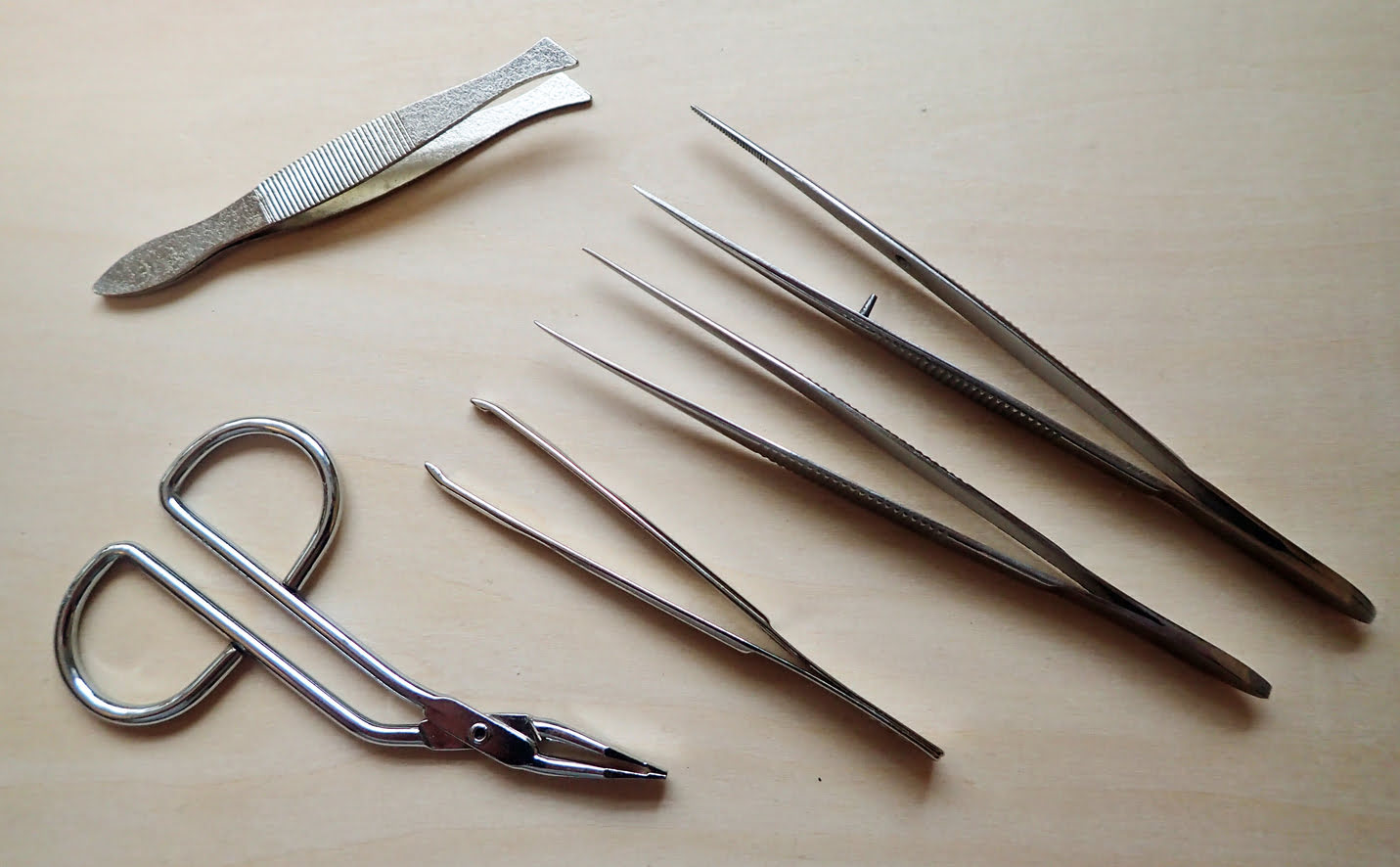
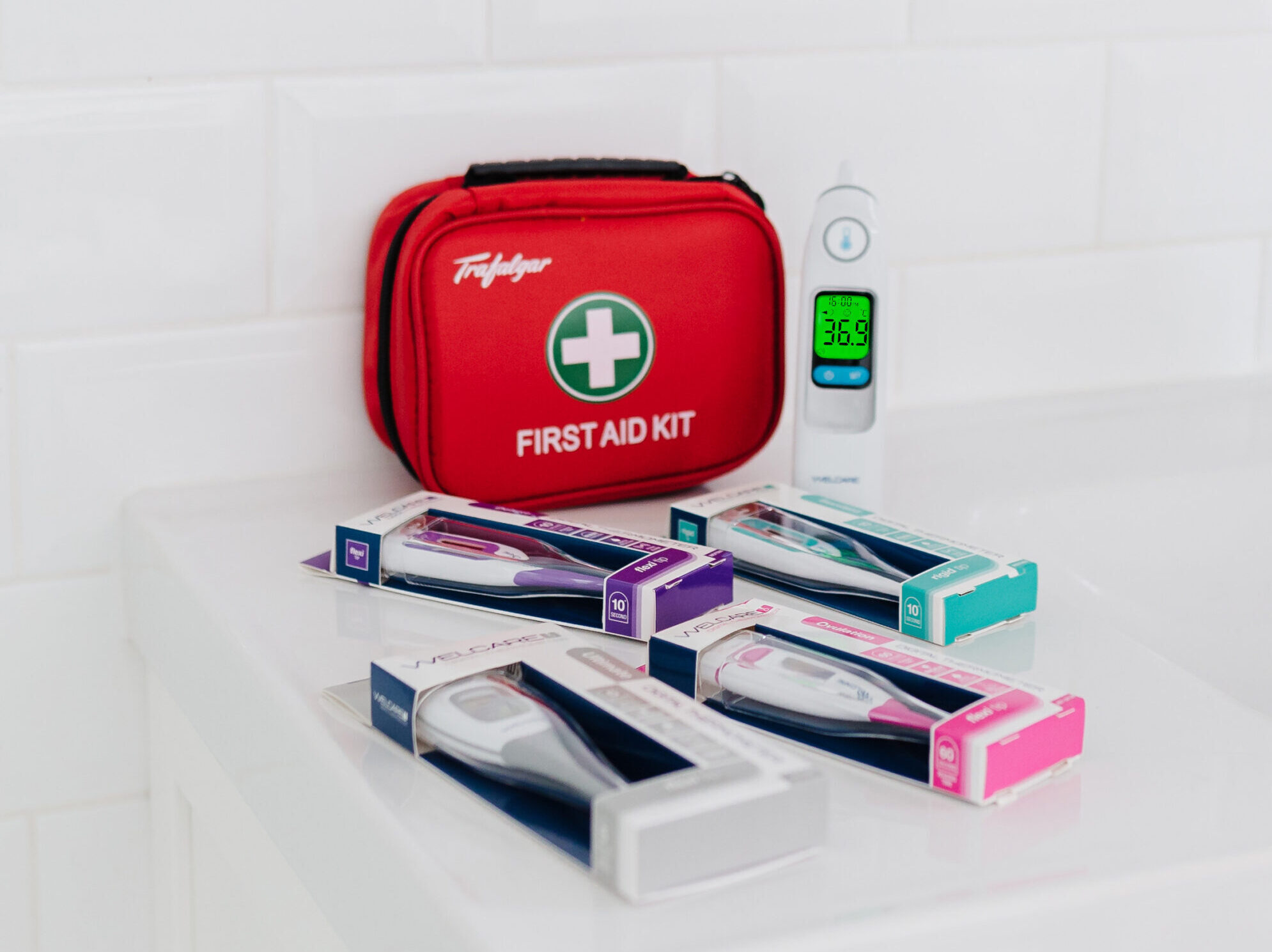
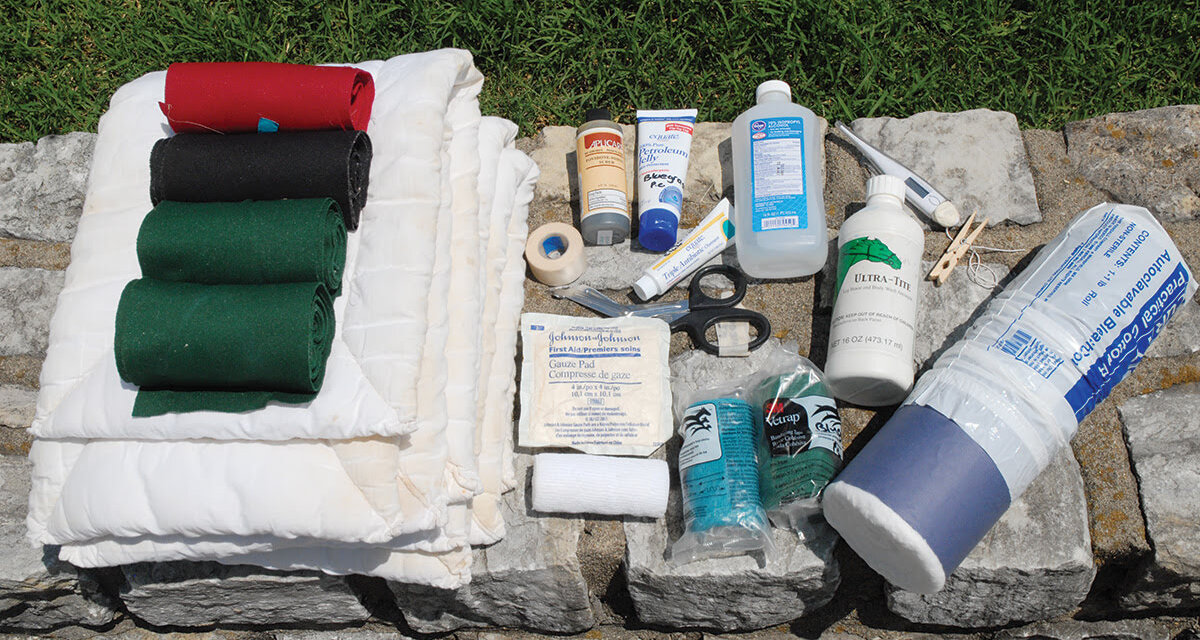
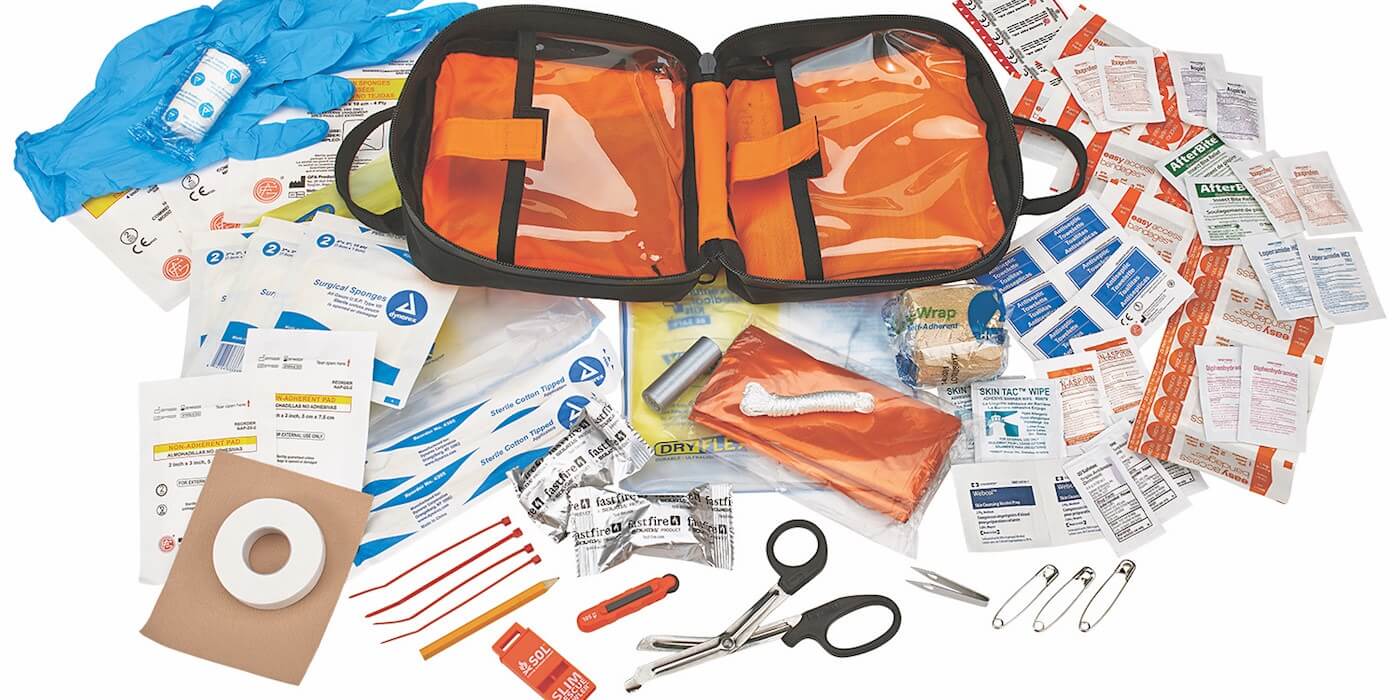
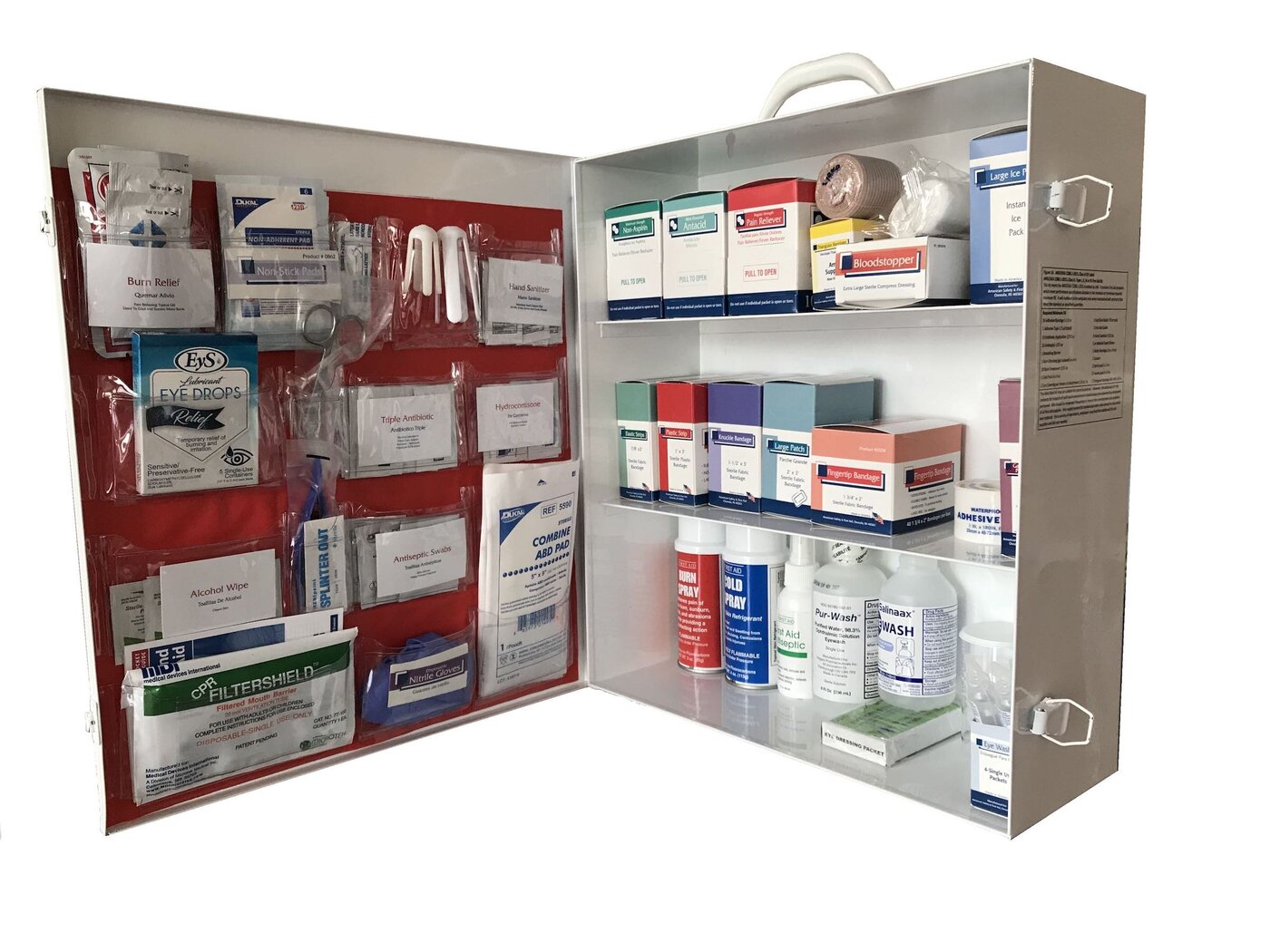

0 thoughts on “What To Put In A College First Aid Kit”